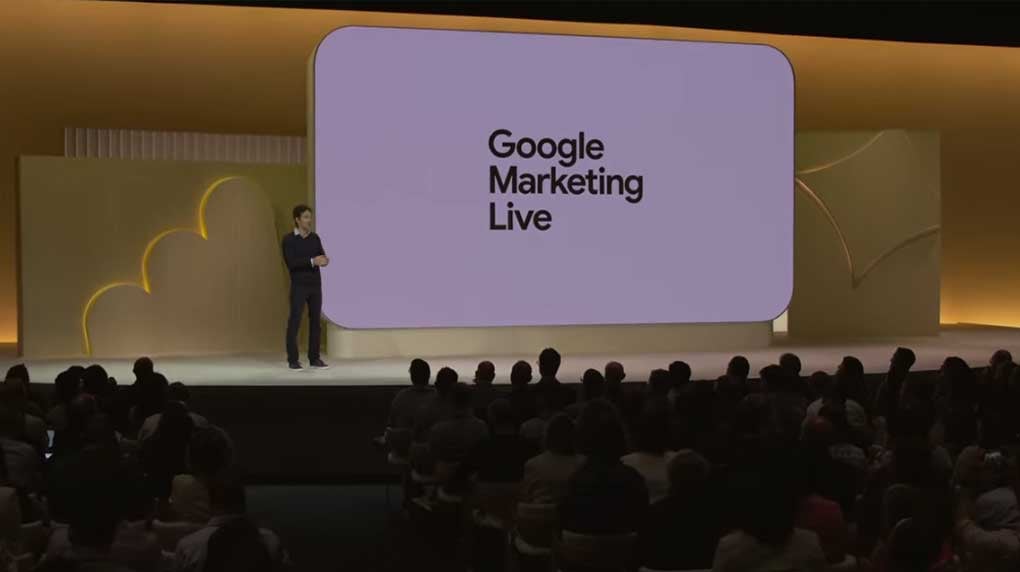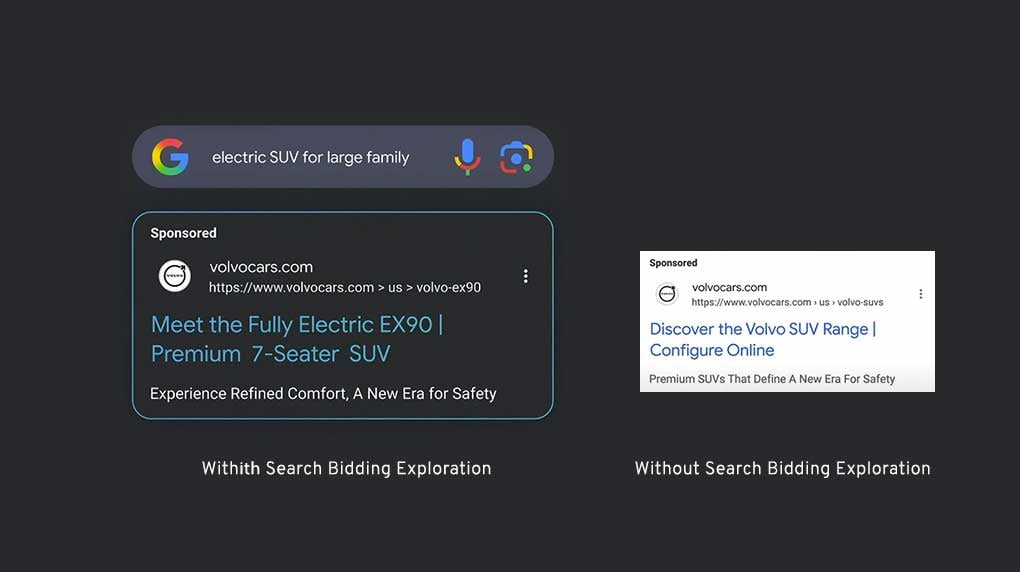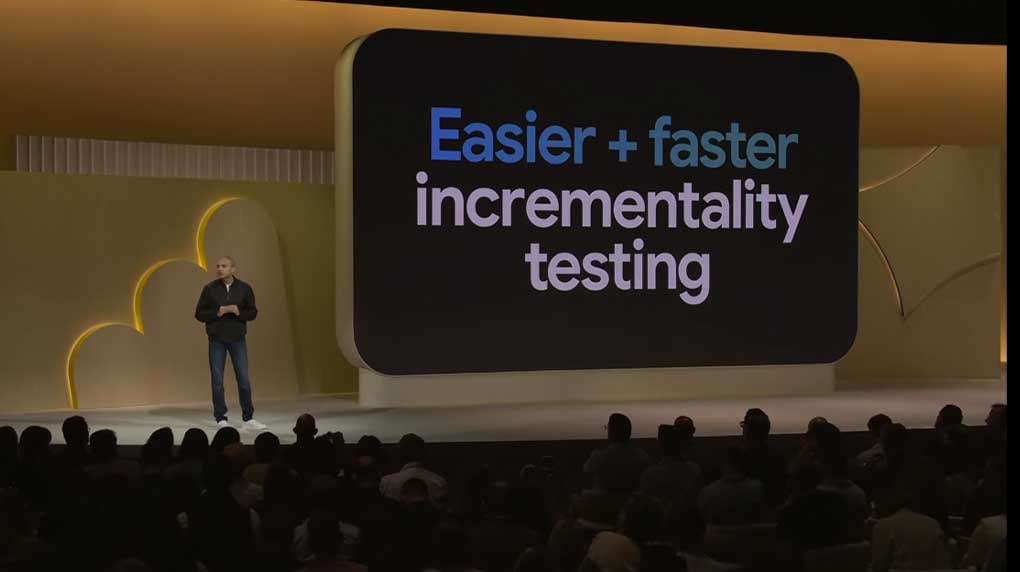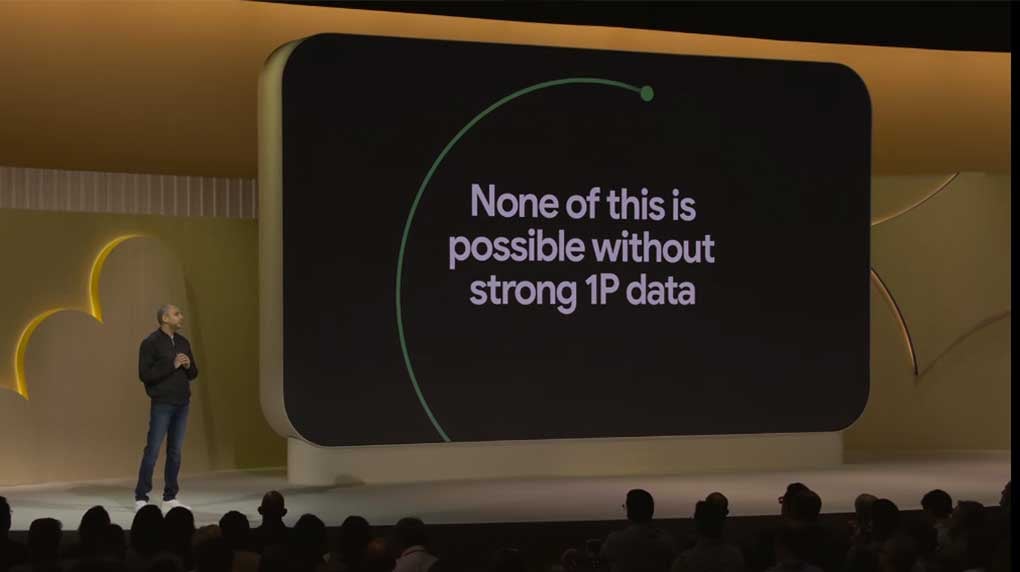At Google Marketing Live 2025, a wave of new AI-powered features and data capabilities were unveiled, ranging from smarter search campaigns to shoppable YouTube formats, and deeper performance reporting. But beyond the headlines, the message was clear: AI features are no longer optional, and measurement is more powerful than ever. Every brand has access to these tools now—the real differentiator is how well you use them.
As a Google Premier Partner, Major Tom got early access to these global updates. We’ve distilled what matters most and where your team should focus next. This isn’t about chasing shiny objects. It’s about building the right systems, signals, and feedback loops to get better results, faster.

What’s new from Google Marketing Live
AI Max for Search
Google’s new AI Max upgrade enhances your existing Search campaigns. It introduces keywordless targeting by analyzing your landing pages and ad assets to uncover high-performing queries even if they aren't in your keyword list. It works alongside your current keyword strategy and is fully opt-in. Early tests show up to a 14% boost in conversions or conversion value at similar CPA or ROAS, and up to a 27% uplift for campaigns underutilising broad match.
Smart Bidding Exploration
This new opt-in AI feature allows Google to bid more strategically on relevant queries that may be outside your standard reach but fit your goals. Marketers using Smart Bidding Exploration are seeing on average a 19% lift in conversions, but it does require you to be comfortable with a 10–30% ROAS flexibility.

Performance Max reporting
Performance Max is finally shedding its black-box reputation. Channel performance reporting, full search term visibility, and diagnostics are now rolling out (retroactive from November 2024). Marketers can now see how individual channels contribute to campaign goals, apply brand exclusions, and use up to 10,000 campaign-level negative keywords.
YouTube Shopping evolution
With 90 million hours of shopping content watched daily and creators trusted 98% more than elsewhere, YouTube is officially a serious commerce channel. Available to all those with a Google Merchant Centre account, new formats like shoppable CTV and mobile mastheads now make it easier to turn video views into conversions—without ever leaving the screen. Advertisers can also track attributed brand searches within a 30-day window, connecting inspiration directly to action.

Incrementality Testing for all
Previously limited to enterprise-level budgets (min $100k), incrementality testing is now accessible for campaigns starting at just $5k—a meaningful shift in accessibility. Tests run from 7 to 56 days (with 28 as the sweet spot), using Google’s in-platform tools to measure causal impact between the campaign and KPI growth. This enables marketers to make more informed and effective budget allocation decisions.
Confidential Matching and Data Manager
Managing first-party data just got easier. Confidential Matching now works across more products, making it simpler to securely activate your most valuable customer data. Paired with Data Manager, it helps you connect your web store, CRM, and offline data in one place. Thereby, helping you track what’s working, diagnose gaps, and improve performance with confidence.
Adjusting your strategy in an AI-first world
The updates Google unveiled are more than new features, they signal a broader shift in how performance marketing works. The advantage isn’t just in toggling on AI. It’s in training it with the right signals, building strong feedback loops, and knowing when to step in.
Success is about how intelligently your systems talk to Google's.
Your data is your most valuable asset
AI can optimize for anything but it needs to know what to aim for.
If your primary signal is something shallow like a form fill or an add-to-cart, that’s what it will prioritize—even if it doesn’t result in revenue.
The brands pulling ahead are the ones connecting deeper business outcomes back into their ad platforms. We're talking won business, customer lifetime value (CLV), sales-qualified leads (SQLs), and retention. These aren’t advanced use cases anymore—they're fast becoming table stakes.
They’re how you outperform your competition when you’re all using the same tools.
Suggested data points:
- Lead quality
- SQLs
- Purchases
- Closed-won revenue
- Retention
- Lifetime value (LTV)
“AI will optimize whatever you give it. If your signals are shallow or misaligned, you're teaching it to scale the wrong outcomes. The sooner you train it with quality data and a complete feedback loop, the stronger your competitive advantage becomes.”
- Keith Gavin, Account Strategist, Major Tom
Why first-party data is your growth engine
Diving deeper into data, Google is doubling down on privacy-safe data activation and giving marketers more control in the process. Confidential Matching lets marketers activate customer data securely across more surfaces, with new levels of privacy control and verification.

Data Manager takes that a step further. It acts as a central hub to connect all your data sources (CRM systems, offline conversions, app activity) and see how they contribute to ROI. Diagnostics are built in, and Google plans to offer step-by-step guidance to strengthen your setup and spot areas for improvement.
With API access coming soon to Google Search Ads 360 (SA360) and Campaign Manager 360, and support expanding across Google Tag Gateway and GA4, this isn’t just a backend tool. It’s a future-proof investment in smarter, more connected marketing.
“When your data is unified and trusted, your AI-powered campaigns don’t just run—they learn. And that’s how you build long-term performance.”
- Abez Leung, Digital Marketing Analyst, Major Tom
Measurement is only as valuable as your follow-through
Incrementality testing used to be a luxury for big-budget brands. Google has now made it accessible with entry points as low as $5K, test durations between 7 and 56 days, and results delivered directly in-platform. Bayesian modelling improves result confidence even with limited data and will even flag your likelihood of success before you run the test.
What does it do? It compares outcomes between audiences who saw your ads and those who didn’t—so you can understand what your campaigns are really contributing.
But measurement only matters if you’re ready to act. PMAX reports, YouTube attribution, and experiment insights are powerful—but only if someone owns the follow-through.
Ask yourself: Do we have the infrastructure, the resourcing, and the process to make these insights stick? Real value only comes if your team can act on what the results reveal.
Without that, better reporting is just another tab in your dashboard.
What AI Max unlocks and where it works best
AI Max builds on your existing Search campaigns by identifying high-potential queries based on your landing pages and creative, not just your keywords. Think of it as layered intelligence: traditional match types still apply, but AI Max helps you catch the relevant searches you might otherwise miss.
Importantly, this isn’t an all-or-nothing play. You can enable just the features you want, whether that’s expanded search matching, text adjustments, or URL updates, and keep full control over negatives, geo targeting, and brand protections.
There’s also more visibility: a new “Source” column in the search terms report shows whether clicks came from keyword-based, keywordless, or broad match traffic. Giving you more visibility into what’s driving results.
And here’s what those of us with Beta access have seen so far: Accounts that haven’t leaned heavily into Performance Max are seeing the biggest impact. That makes AI Max a smart, low-risk test for more traditional setups looking to scale efficiently.
PMAX has matured but still needs strategy
Performance Max has long been treated like a black box. That’s finally starting to shift. Channel-level performance, search term reports, and campaign diagnostics are giving advertisers more visibility than ever.
But visibility doesn’t equal clarity.
When performance dips, is it due to weak signals? Underperforming creative? The wrong campaign mix? PMAX can show you the symptoms—but human judgment is still needed to diagnose the cause and decide what to change.
It’s still on you to interpret the data and make the right call. AI helps automate, but strategic thinking still sets the direction.
YouTube is now a performance channel
YouTube has evolved from a brand storytelling platform into a full-funnel commerce engine. With shoppable CTV formats, mobile mastheads, and product feed integration, viewers can move from discovery to purchase without ever leaving the video.
Even better, attributed brand searches (within a 30 day window) can now show how video content is driving deeper search behaviour. Thus, giving you a more complete picture of what sparked that intent.
But to make the most of this, your creative has to carry more weight. If your videos are optimized for awareness but not conversion, you’re leaving results on the table. This is where media and creative strategy need to meet. The format has changed—your approach should, too.
Questions to ask your team
Brand hygiene matters more than ever. Tools like attributed brand search rely on pre-configured brand lists, and even the most advanced automation can fall short if your foundational naming or taxonomy is inconsistent. If your organisation has fragmented naming conventions across regions or products, now’s the time to get aligned.
- Are we sending revenue, CLV, or retention data back into Google Ads?
- Are our conversion actions optimized for outcomes, not just activity?
- Are we utilizing PMAX in our campaigns
- If so, are we acting on what PMAX reporting is telling us?
- Does it make sense for us to use Google’s new incrementality testing capabilities?
- Does it make sense for us to lean into YouTube’s new features?
- If so, are our creative teams aligned with our new media outcomes on YouTube?
Why this matters more than ever
AI might handle the execution, but it’s still humans who define the signals, shape the creative, and measure what matters. If the foundation isn’t right, if your data is misaligned or your goals aren’t clearly reflected in the platform, the smartest algorithm in the world won’t get you where you want to go.
AI isn't replacing marketing strategy, but it is shifting where your leverage lives.
The brands pulling ahead are the ones that:
- Build clear, accurate feedback loops
- Optimize for revenue, not vanity metrics
- Adapt quickly as platforms shift
- Understand where to put AI guardrails and where to let it learn
Google’s internal Meridian framework reinforces this shift—focused on helping marketers strengthen their data foundations and signal strategy so that AI can do its job more effectively. Because in this new landscape, performance isn’t about using AI—it’s about teaching it well.
None of this is about giving up control. It’s about building systems that get smarter over time, and knowing how to steer them in the right direction.
At Major Tom, we’ve already been testing what’s next. If you’re ready to stay ahead of the curve, we’re ready to help you get there. Reach out to our expert team today.
